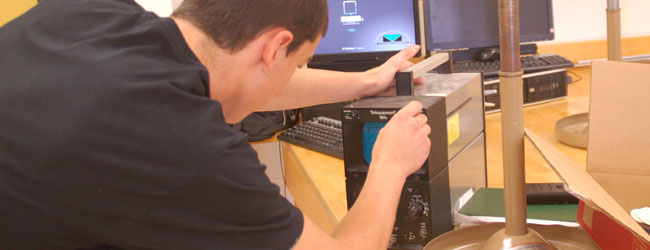There are few classes at DHS where students participate in hands on activities to learn the material they are studying in the classroom. Almost all of these activities are labs in science classes. Most students only take the first year course for a particular science class, where they do basic and simple labs. However, the students that end up taking the Advanced Placement (AP) course of that science end up doing more complex and involved labs that a majority of students who took those classes found more entertaining.
“The labs you do in first year classes don’t even compare with the ones that you do in AP classes,” Junior Nathan Hall said.
Over the course of the year, the AP Chemistry class does a variety of labs showing all different aspects of chemistry. During these labs, students use different type of equipment for the first time. Like many of the students, Junior Matt Lee enjoyed and was fascinated with these tools.
“You use a bunch of tools like a spectrophotometer,” Lee said. “It’s basically like a big machine that gives off light at a specific wave length to a certain area and you place a solution with color where these light waves are hitting and it tells you how much of that light is being absorbed.”
Other AP Chemistry students are more fascinated with the actual labs themselves rather than the tools used during them. Depending on the person, each of them has a favorite one.
“My favorite lab was one where we made gold pennies,” Junior Nathan Hall said. “We put regular pennies into a bunch of solutions and then after a while they turned silver. Then we put them on a hot plate and they turned golden, even though they weren’t really gold they still looked cool.”
Some students preferred the labs that had more activity to them. They liked seeing physical changes during the experiment. One of the more popular labs was the dry ice lab. In this lab, students put a piece of dry ice in a pipette and clamped it shut with a pair of pliers causing a large amount of pressure to be exerted on the plastic pipette. They then placed it under water. These conditions made it possible for the dry ice to exist as a solid, liquid, and gas at the same time. However, over time, the pressure builds up and becomes too much for the pipette, causing it to explode. This is Junior McKenzie Laursen’s favorite part of this lab.
“Watching the little explosion caused by the pressure build up was cool,” Laursen said. “The only bad part was it made a mess everywhere.”
Another type of lab that many AP Chemistry students enjoyed were ones that involved multiple chemical reactions where the reactants weren’t necessarily the same as the products.
“I also liked the lab where we took a piece of metal copper and then reacted it to get a totally different product, then we took that product and reacted it with something else,” Lee said. “We did that about six times and at one point you would have thought we had nothing close to copper but after all these reactions we ended up with copper again.”
AP Physics students were fascinated by the types of labs they participated in this year. Junior Ian Peterson’s favorite physics lab was one that showed the relationship between angle and displacement. In this lab, his class shot off rockets that could travel up to hundred feet in the air. Once the lab was finished, their teacher let the students have some fun.
“The reason why it’s my favorite lab is because once we finished it, we could do things like shoot them and try to make a field goal through the field goal posts,” Peterson said.
Another popular physics lab with DHS students was the one where they made their own solar cars. It demanded students to make a car that moved based solely on the sun captured from the solar panels.
“The solar panel lab was fun because my group worked really hard on our car and it was cool to actually see it kind of move on a sunny day,” Peterson said.
Labs are a main part of all the AP science classes at DHS. They provide students with the chance to see in person the concepts they are learning inside the classroom. Many of the students learn and enjoy the work required from these labs.



